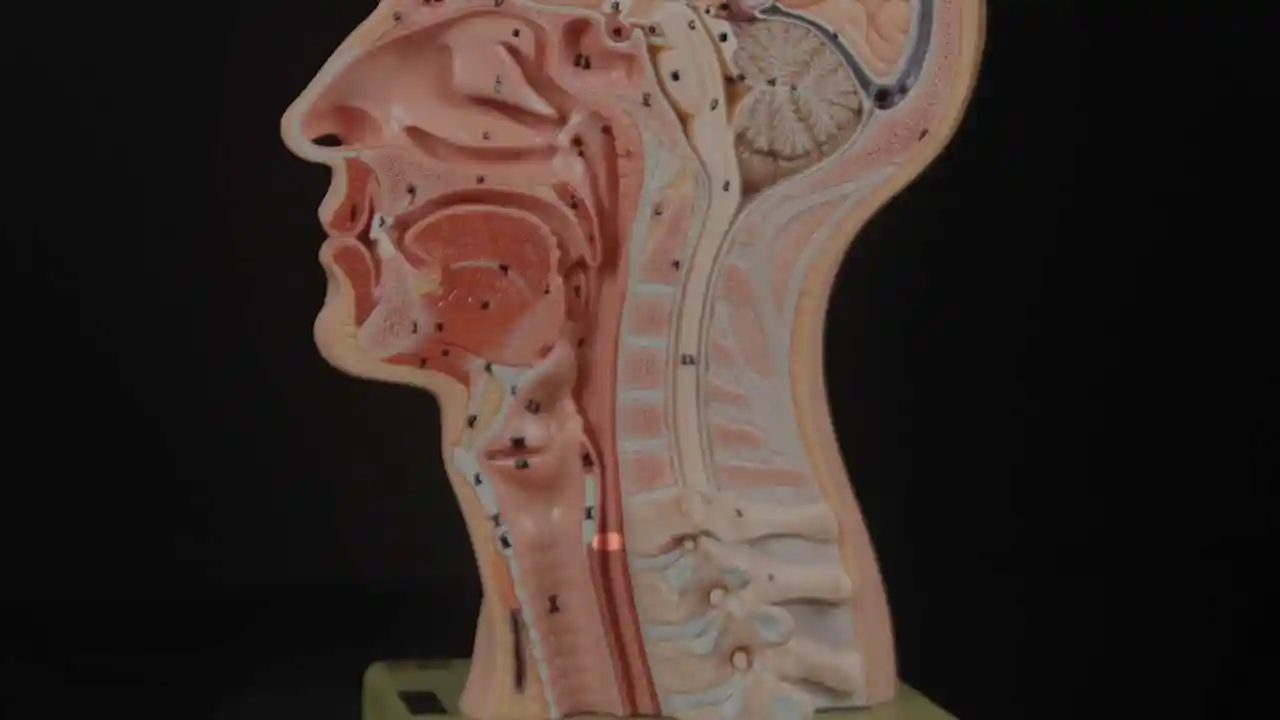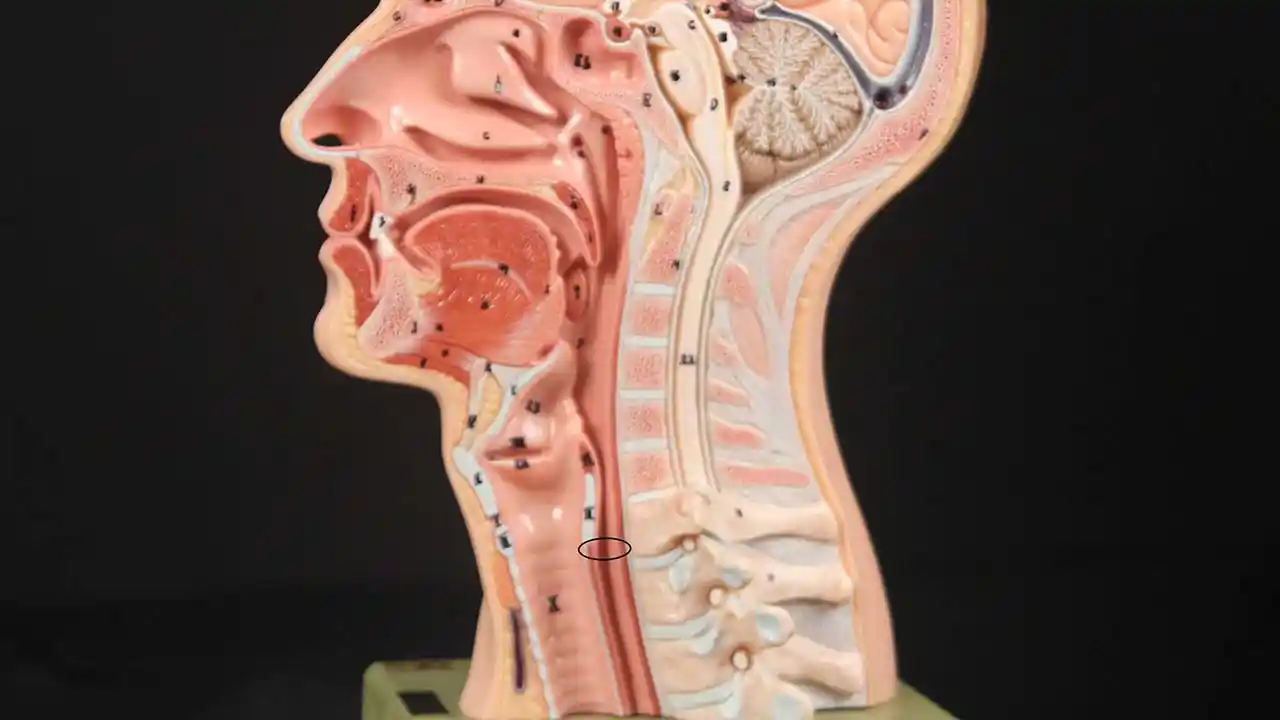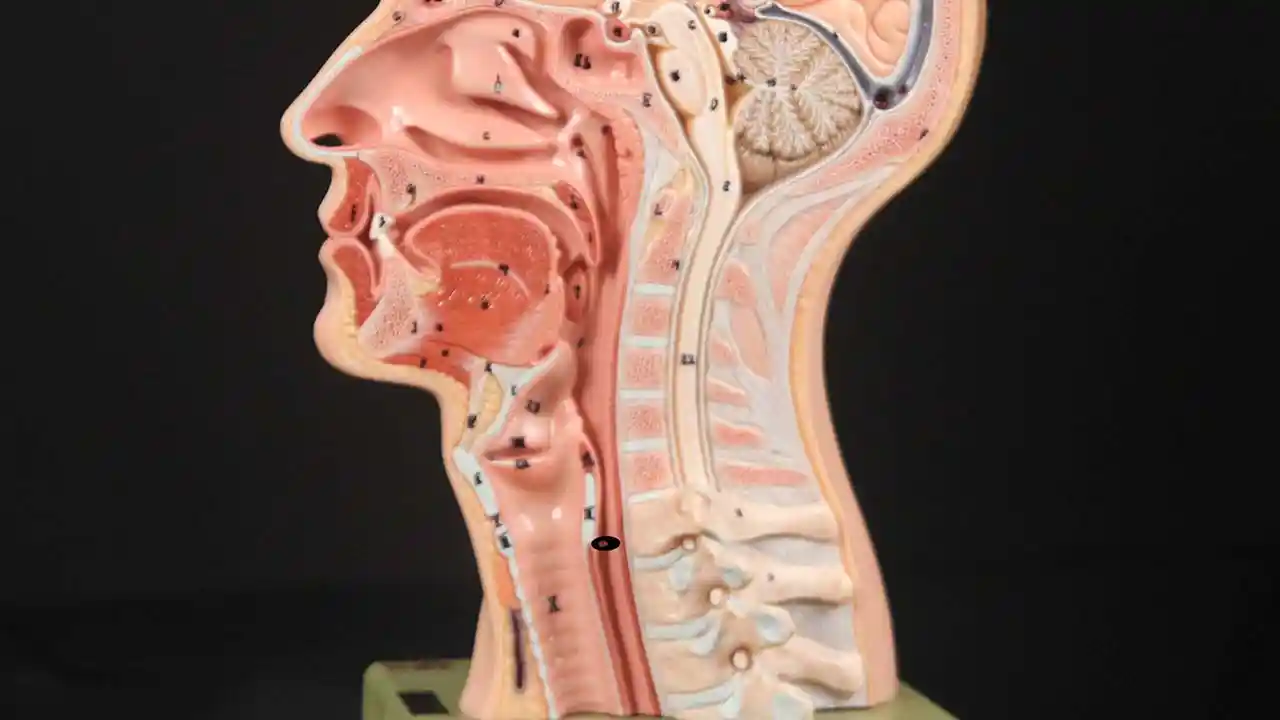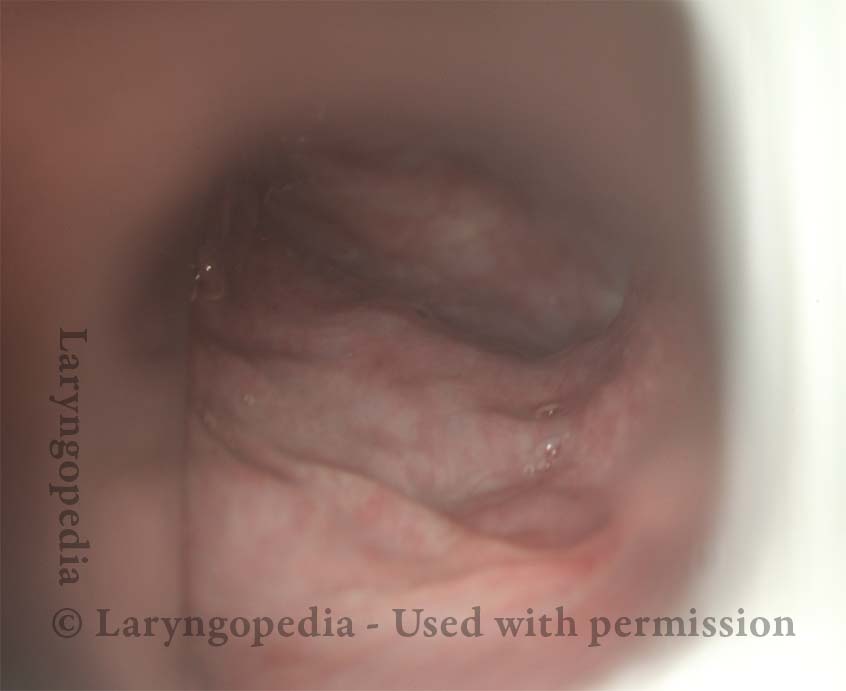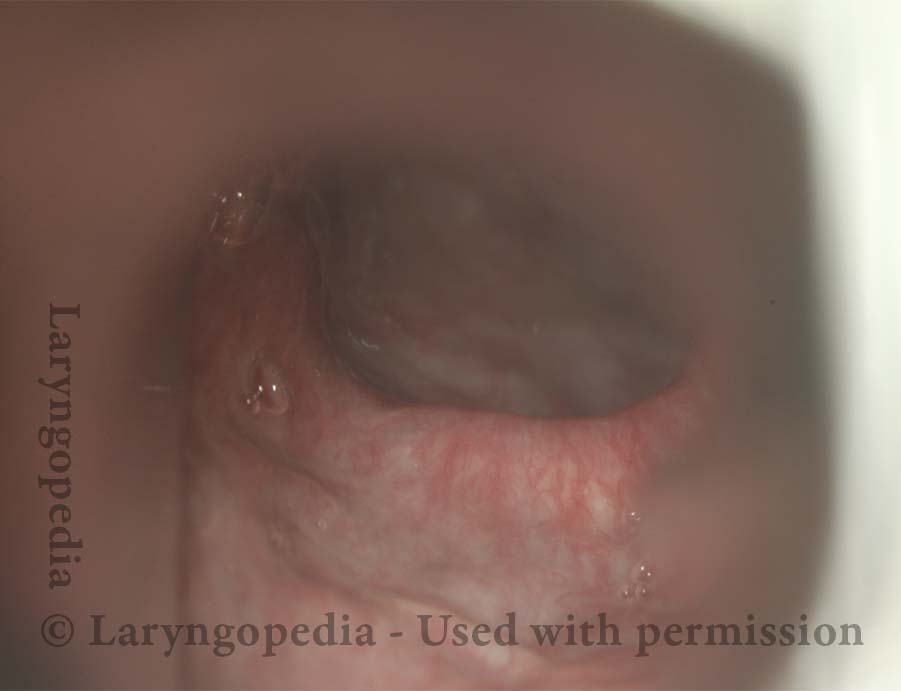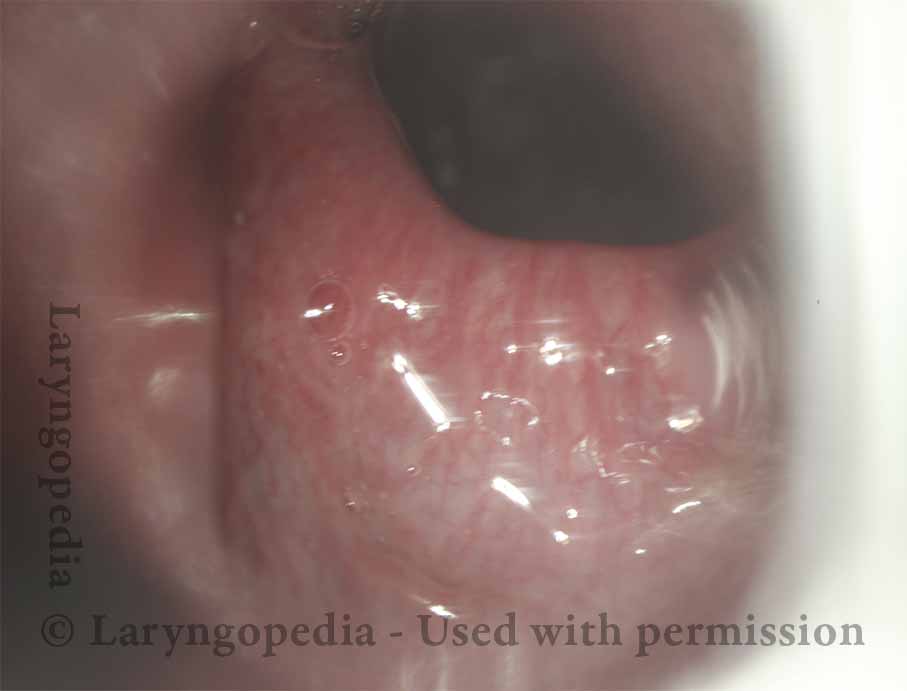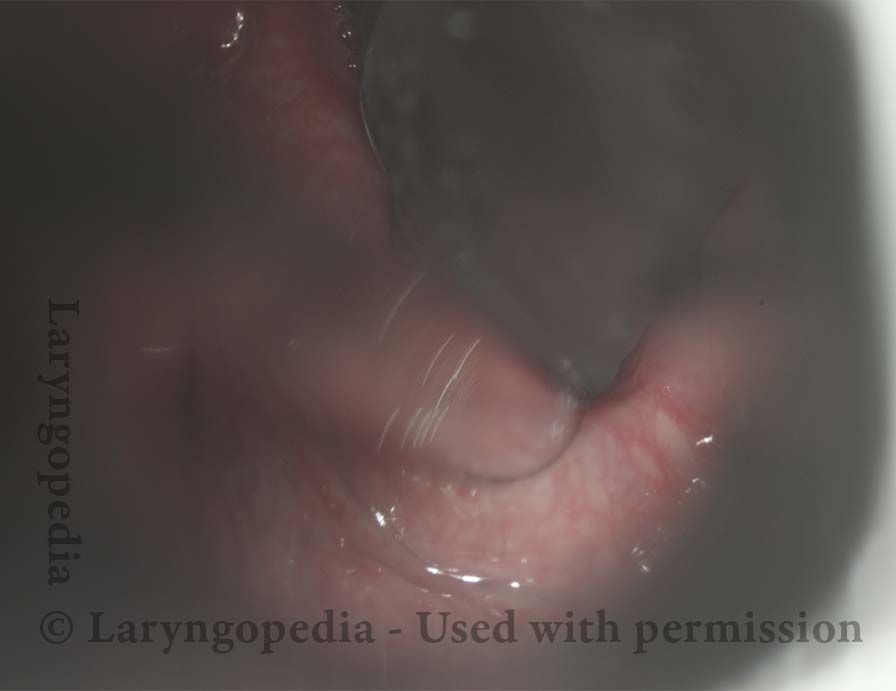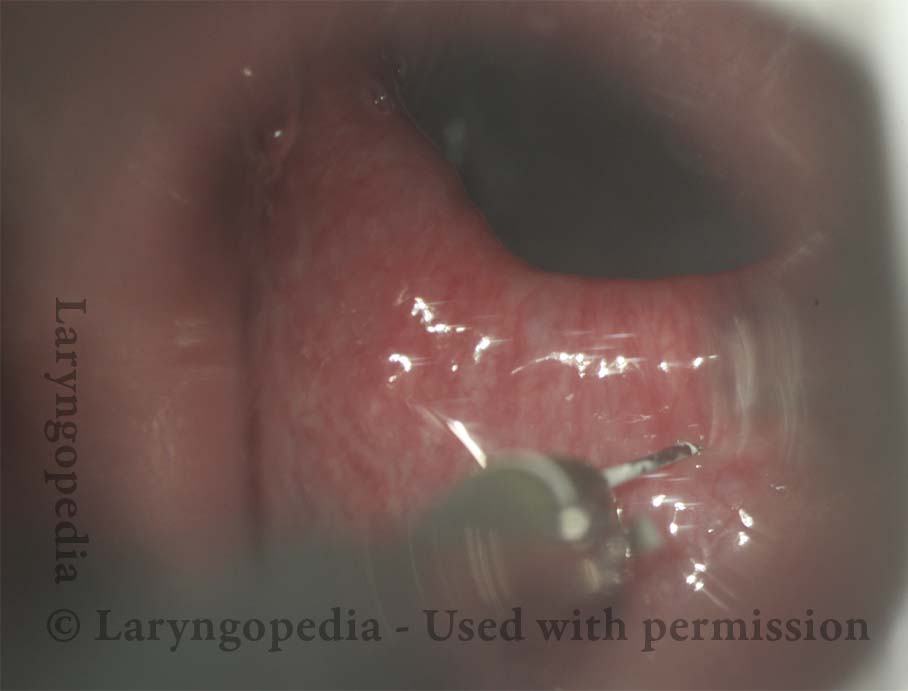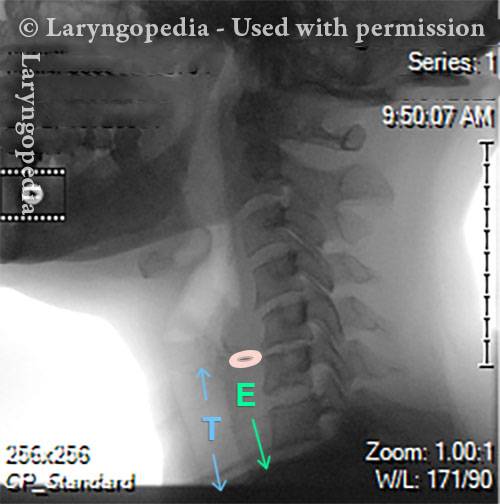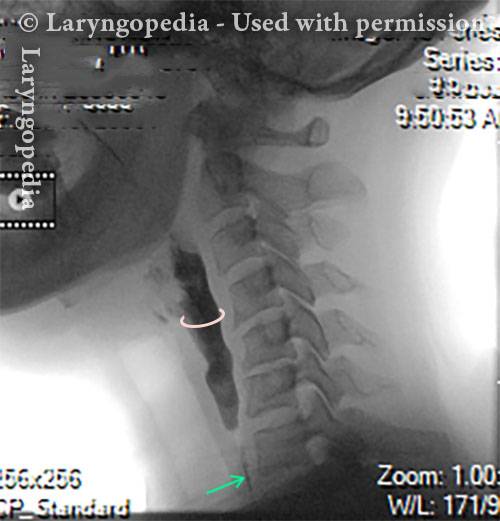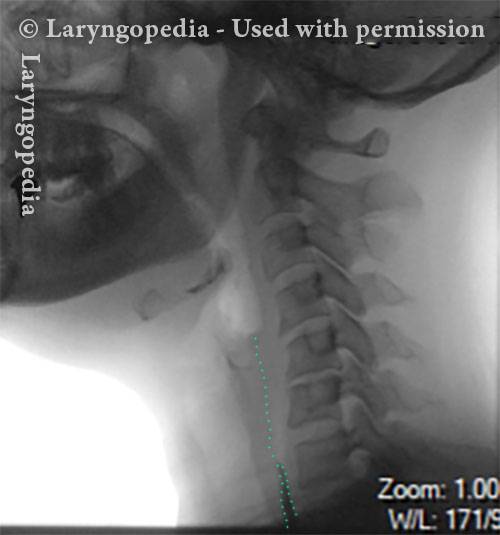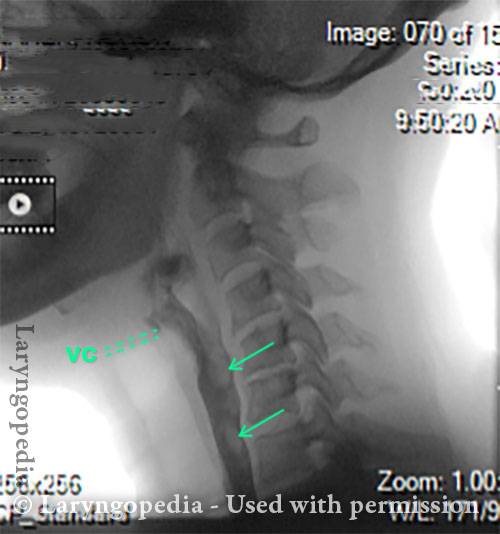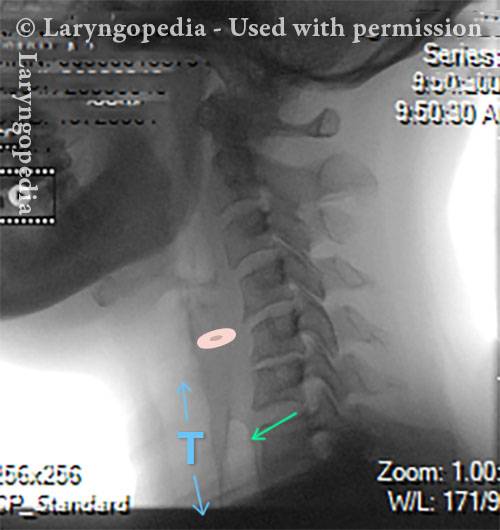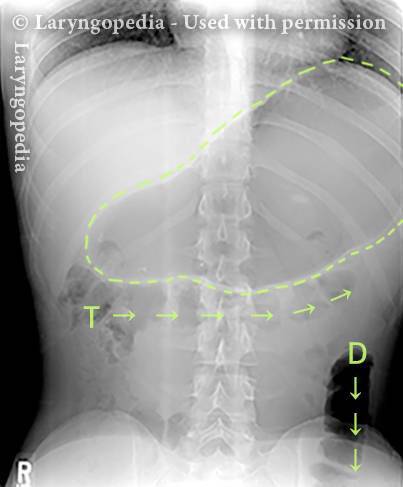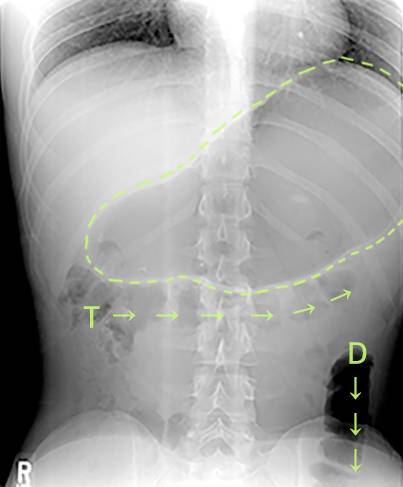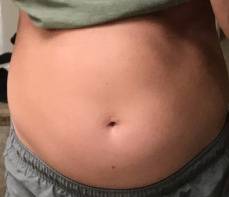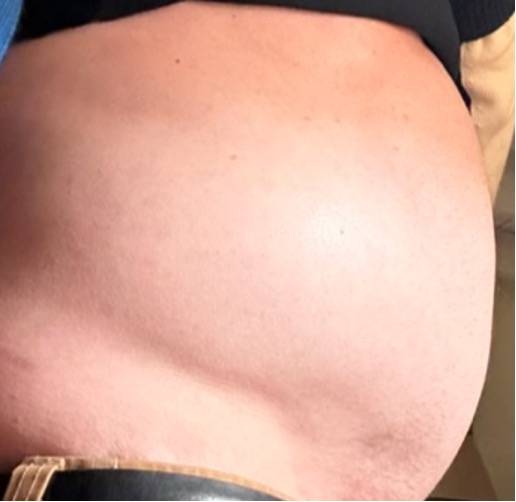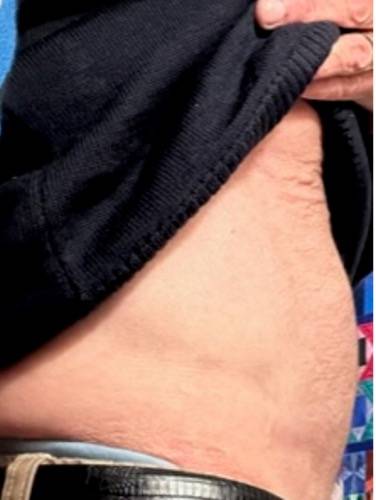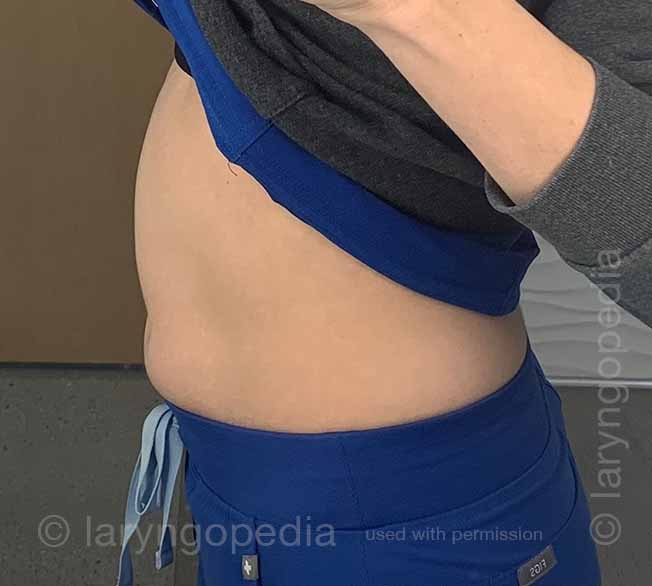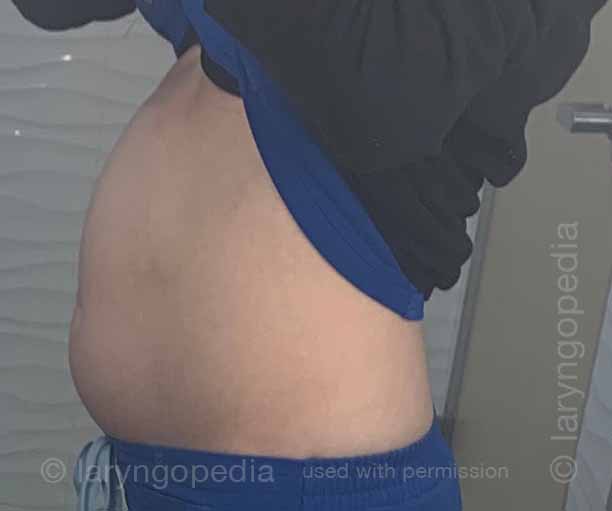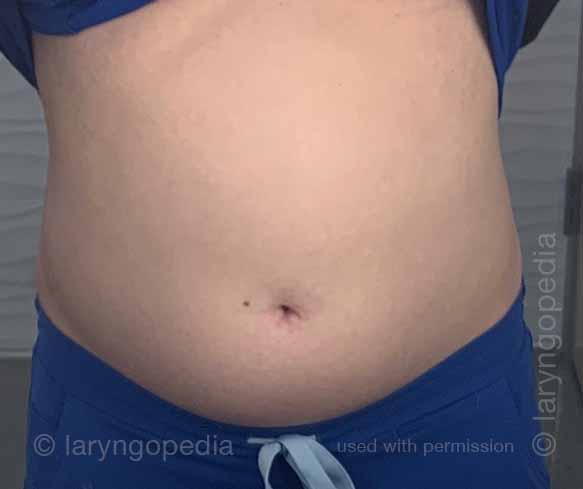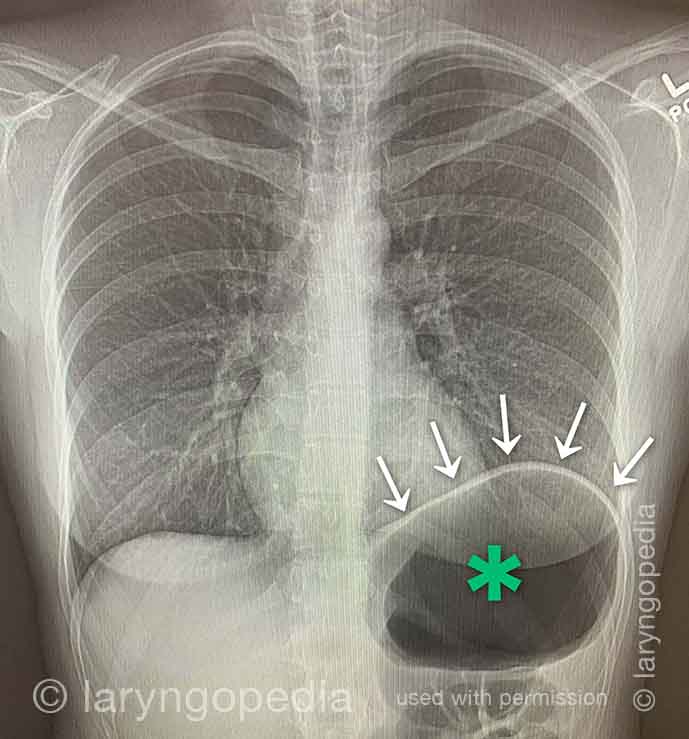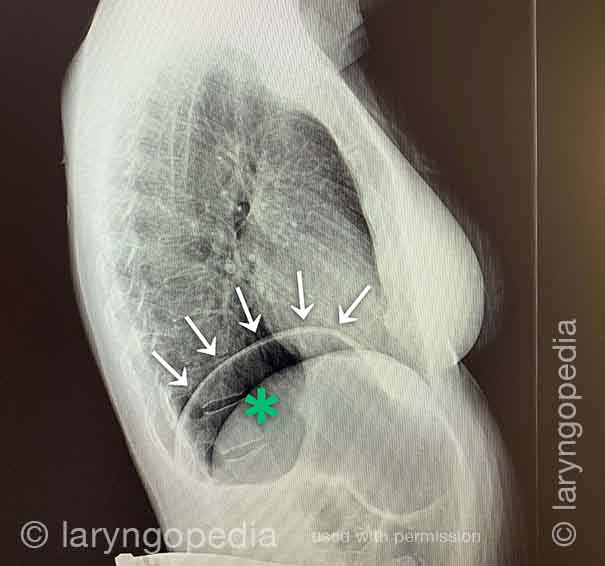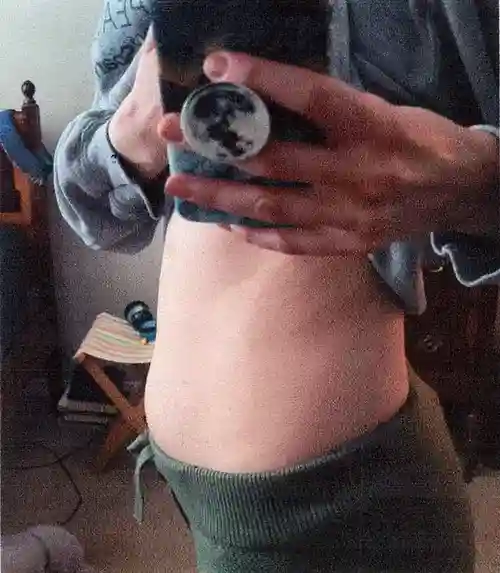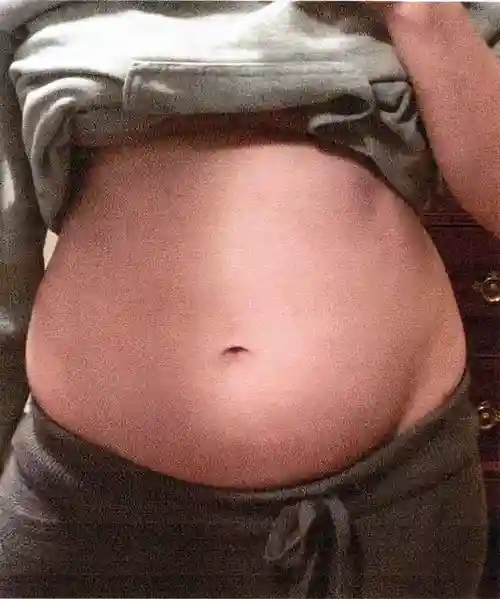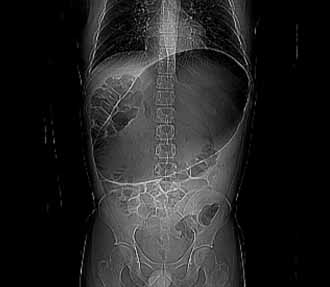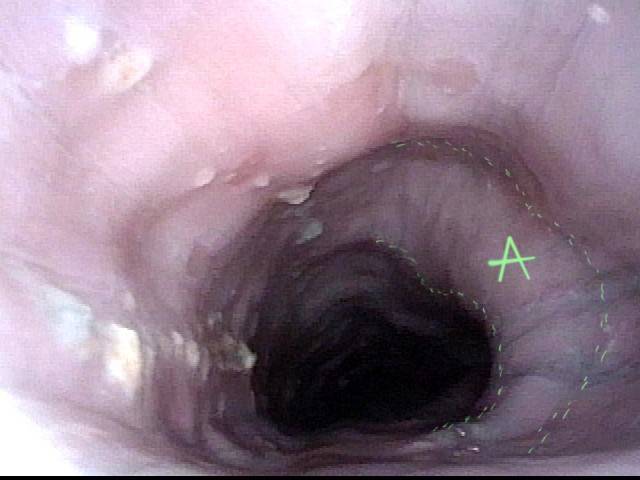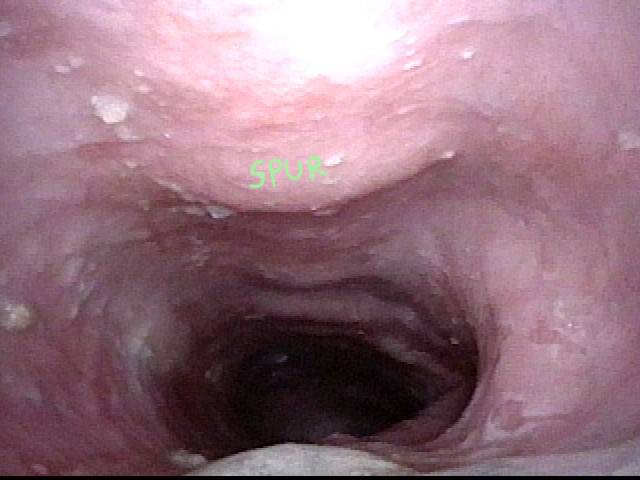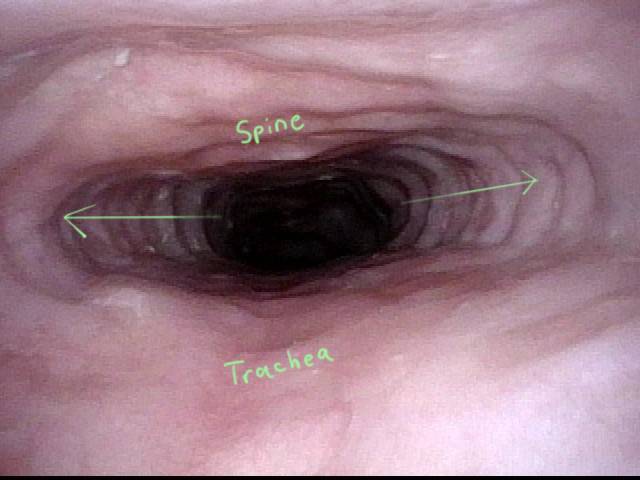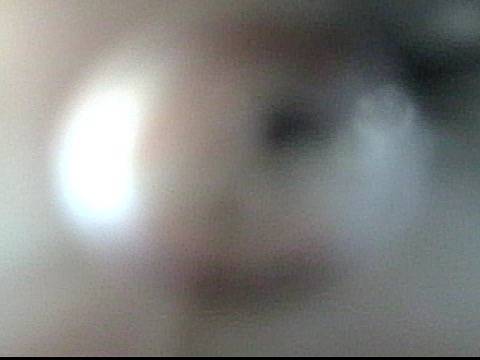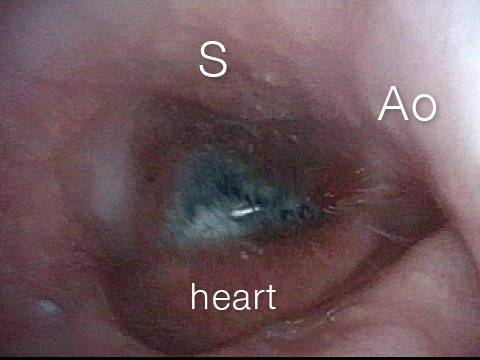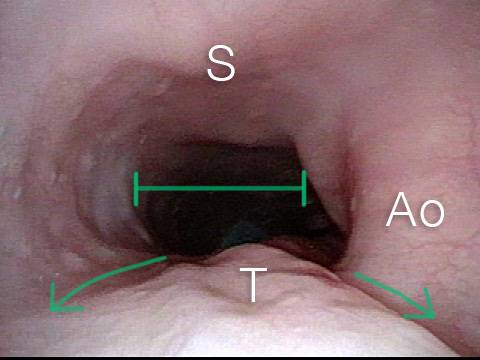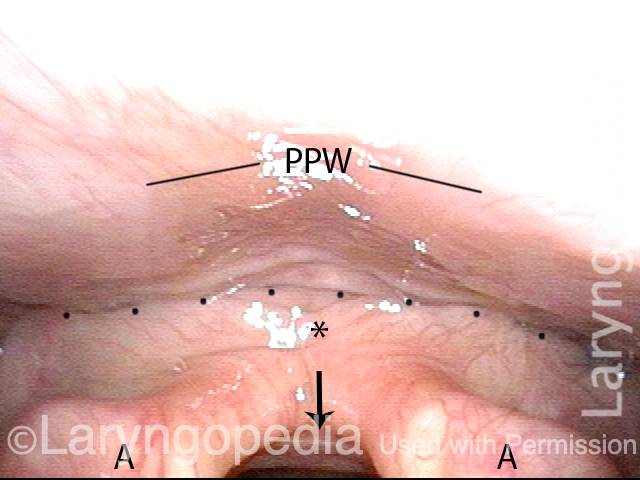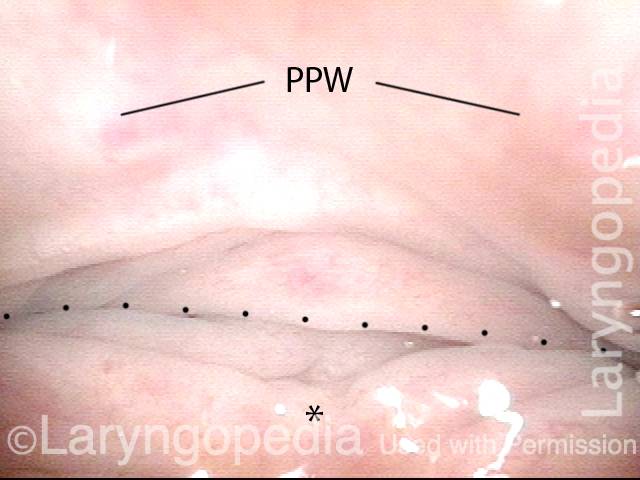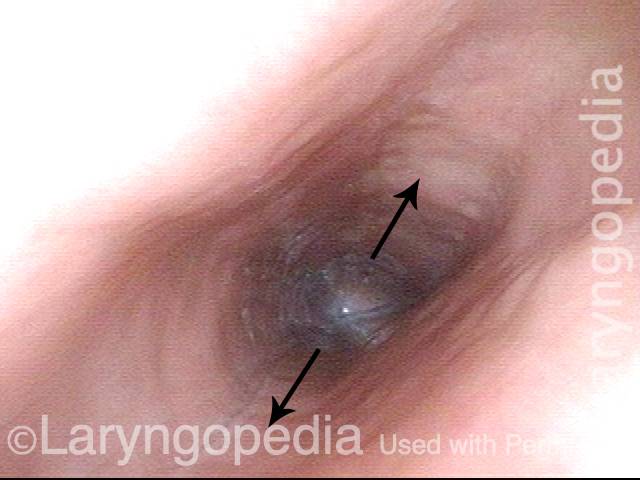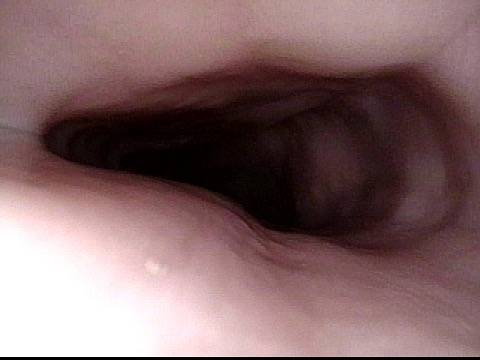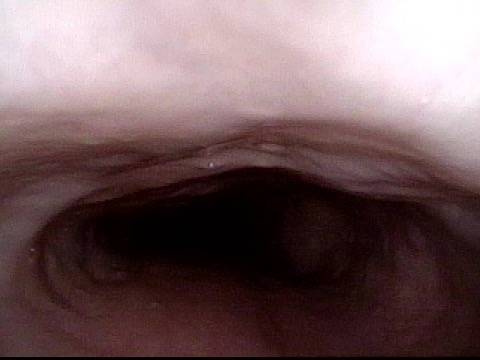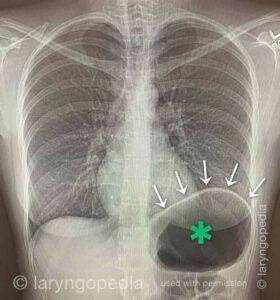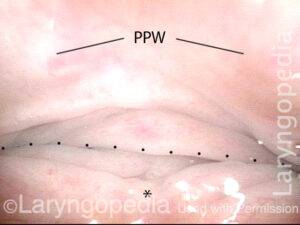Não consegue arrotar?
A incapacidade de arrotar ou “arrotar” (também conhecida como Disfunção Cricofaríngea Retrógrada [DCF-R], ou R-CPD em inglês) ocorre quando o esfíncter esofágico superior (EES) perde a capacidade de relaxar para liberar a “bolha” de ar.
![]()
O que é DCF-R (incapacidade de arrotar, sem arrotar)?
Pessoas que não conseguem liberar o ar para cima são infelizes. Eles podem sentir a “bolha” no meio do pescoço, sem ter para onde ir. Ou experimentam gorgolejar quando o ar sobe pelo esôfago, apenas para descobrir que o caminho de fuga está bloqueado por um esfíncter não relaxante.
É como se o músculo do esôfago se agitasse e se contraísse continuamente, sem sucesso. Os sintomas comuns incluem incapacidade de arrotar, ruídos gorgolejantes, pressão e inchaço no peito/abdominal e flatulência.
Os 4 principais sintomas do DCF-R
Incapacidade de arrotar
Isto ocorre quase sempre, mas não exclusivamente, “ao longo da vida”, muitas vezes excluindo a infância, uma vez que muitos com DCF-R arrotaram quando bebês. A maioria dos que não arrotam não consegue se lembrar de ser convencionalmente capaz de arrotar e também pode apontar para um momento em que percebeu isso como um “problema” ou “diferença dos outros” na infância ou adolescência.
Alguns com DCF-R arrotam ocasionalmente, mas são micro, aleatórios, não controláveis e não proporcionam alívio dos seguintes sintomas.

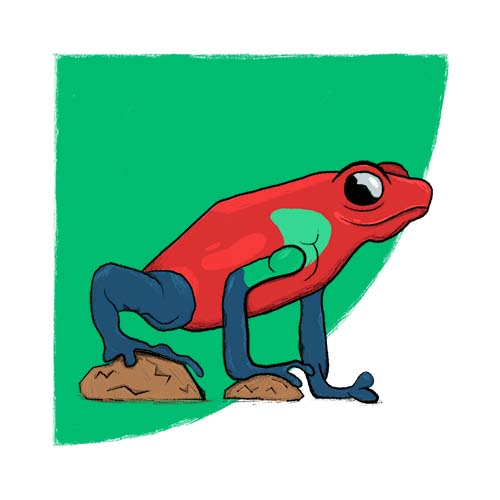
Barulhos gorgolejantes socialmente estranhos
Esses ruídos podem ser em sua maioria silenciosos e “internos”, mas na maioria das vezes são altos o suficiente para serem constrangedores. A abertura da boca os torna mais altos.
Quase todo mundo diz que é facilmente ouvido a vários metros de distância; não raramente “até a porta”. Eles geram ansiedade social na maioria das pessoas com DPC-R, fazendo com que algumas evitem comer ou beber durante horas antes de ocasiões sociais e até mesmo durante elas. A carbonatação os torna muito piores e deve ser evitada a todo custo. Algumas descrições mais coloridas dos pacientes:
- Sinfonia de gorgolejos
- Sapos coaxando
- Tábuas rangendo
- Sons de dinossauros
- Baleia estrangulada
- O Exorcista
Exemplos de áudio de gorgolejar
Inchaço e pressão
A localização mais comum é no abdômen central alto. A distensão é comum, especialmente no final do dia. Usando a gravidez como analogia, mesmo nos homens, o grau habitual de distensão é descrito como “3 ou 4 meses”. “Seis meses” não é raro, e um jovem esguio estava “a termo”.
Quase tão frequentemente quanto desconforto abdominal, os pacientes descrevem pressão no peito e, para alguns, esse é o pior sintoma. Alguns têm pressão na parte inferior do pescoço. Embora “pressão” seja o descritor frequente, alguns sentem dores agudas ocasionais no abdômen, nas costas ou entre as omoplatas. Alguns têm que se deitar depois de comer para encontrar algum alívio.
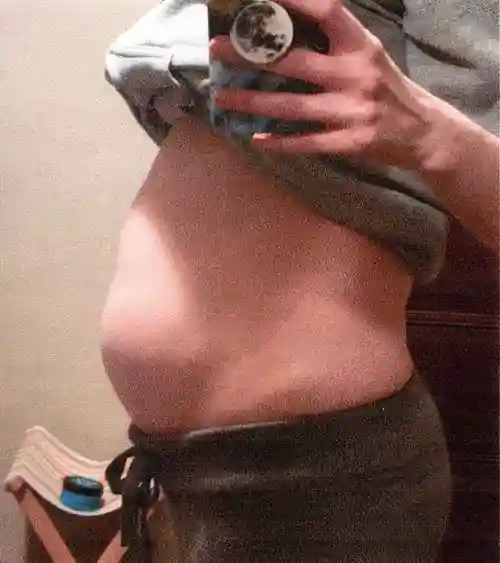
Flatulência
Rotineiramente, isso é descrito como “grave” ou mesmo “ridículo”. A flatulência aumenta à medida que o dia avança e muitos a experimentam durante a noite. Quando estão perto de outras pessoas, alguns examinam os arredores o tempo todo em busca de um lugar onde possam ir brevemente para liberar gases. Compreensivelmente, as ramificações sociais deste problema também podem ser importantes.

![]()
Sintomas menos comuns de DCF-R

Náusea
especialmente depois de comer quantidades maiores do que o normal ou beber bebidas carbonatadas.
Náusea na garganta?(Curta do YouTube)
Hipersalivação
quando os sintomas de inchaço são graves.
Soluços dolorosos
novamente, mais comumente depois de comer.
Ansiedade e inibição social
Isso pode ser PRINCIPAL devido a gorgolejar, flatulência e desconforto.
Falta de ar
Uma pessoa pode estar tão cheia de ar que o atletismo – ou mesmo a capacidade de subir escadas – fica prejudicado.
Constipação
(Ainda em avaliação): Nem sempre é possível responder à flatulência e o resultado é que o cólon descendente parece dilatar-se, tornando os músculos esticados em sua parede menos eficazes na movimentação do conteúdo do cólon.
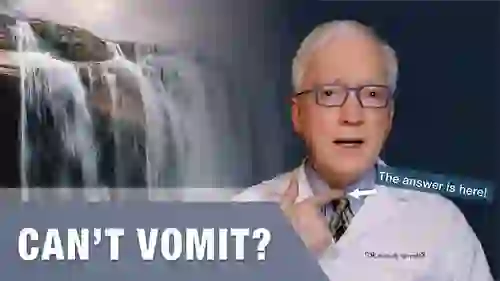
Incapacidade de vomitar
Alguns simplesmente não conseguem vomitar; mais frequentemente é possível, mas somente após ânsia de vômito extenuante. O vômito (espontâneo ou auto-induzido) sempre começa com um ruído muito alto e grande liberação de ar, em um fenômeno que chamamos de “vômito aéreo”. A emetofobia pode ser grave.
O que causa o DCF-R?
A incapacidade de arrotar ou arrotar ocorre quando o esfíncter esofágico superior (músculo cricofaríngeo) não consegue relaxar para liberar a “bolha” de ar. O esfíncter é uma válvula muscular que circunda a extremidade superior do esôfago, logo abaixo da extremidade inferior da passagem da garganta. Se olharmos de frente para o pescoço de uma pessoa, ele está logo abaixo do “pomo de Adão/Eva”, diretamente atrás da cartilagem cricóide.
Se você quiser ver isso em uma modelo, veja as fotos abaixo. O músculo esfincteriano relaxa por cerca de um segundo toda vez que engolimos saliva, comida ou bebida. Todo o resto do tempo é contratado. Sempre que uma pessoa arrota, o mesmo esfíncter precisa se soltar por uma fração de segundo para que o excesso de ar escape para cima.
Em outras palavras, assim como é necessário que o esfíncter “solte-se” para admitir comida e bebida para baixo no ato normal de engolir, também é necessário que o esfíncter seja capaz de “soltar-se” para liberar ar para cima para arrotar.
Cricopharyngeus Muscle (1 of 3)
Cricopharyngeus Muscle (1 of 3)
Open Cricopharyngeus Muscle (2 of 3)
Open Cricopharyngeus Muscle (2 of 3)
Closed (3 of 3)
Closed (3 of 3)
![]()
Tratamento para DCF-R
Injeção de Botox no Bastian Voice Institute
Para pessoas que vivenciam esse problema a ponto de causar desconforto e redução da qualidade de vida, aqui está uma abordagem:
Primeiro, um estudo videofluoroscópico da deglutição, talvez com grânulos efervescentes. Isso estabelece que o esfíncter funciona normalmente na direção da deglutição para frente (anterógrada), mas não na direção reversa (retrógrada) de arrotos ou regurgitações. Juntamente com os sintomas descritos acima, isto estabelece o diagnóstico de disfunção cricofaríngea apenas retrógrada (não relaxamento).
Em segundo lugar, um ensaio de tratamento envolvendo a colocação de Botox no músculo esfincteriano com defeito. O efeito desejado do Botox no músculo é enfraquecê-lo durante pelo menos vários meses. A pessoa tem assim muitas semanas para verificar se o problema está resolvido ou pelo menos minimizado. (Veja o vídeo, Quais testes são necessários para DCF-R?)
A injeção de Botox poderia potencialmente ser feita em um consultório, mas recomendamos a primeira vez (pelo menos) aplicá-la durante uma breve anestesia geral em uma sala de cirurgia ambulatorial. Isso porque na primeira vez é importante responder à pergunta de forma definitiva, ou seja, que o problema é a incapacidade do esfíncter de relaxar quando se depara com uma bolha de ar vinda de baixo.
Aumentando o CPM para uma injeção DCF-R
Estas são fotos intraoperatórias de uma das quase 1.700 pessoas tratadas para DCF-R em março de 2024. Esta sequência mostra várias coisas:
- O esôfago dilatado e “sempre aberto” distal (abaixo) do músculo
- Como identificar o músculo cricofaríngeo
- Uma maneira de injetar o músculo.
Above the CPM (1 of 5)
Above the CPM (1 of 5)
Ridge of the CPM (2 of 5)
Ridge of the CPM (2 of 5)
Exposed CPM ( 3 of 5)
Exposed CPM ( 3 of 5)
CPM Palpated ( 4 of 5)
CPM Palpated ( 4 of 5)
Botox injection ( 5 of 5)
Botox injection ( 5 of 5)
O que esperar após o procedimento de Botox?
Revise a entrada publicada no Diário do Dr. Bastian para obter uma explicação completa, mas em poucas palavras:
- Não haverá alívio dos sintomas de DCF-R por 1 a 5 dias.
- Somente quando começam os microarrotos é que os pacientes começam a notar o início do alívio dos sintomas. Portanto, não experimente carbonatação no almoço no dia da injeção!
- Os efeitos colaterais iniciais do Botox podem ser “estranhos” por alguns dias ou semanas.
- Se você puder manipular seus gorgolejos antes do tratamento com Botox, para torná-los mais suaves ou mais altos, use essa técnica para ver se consegue apressar os arrotos ou torná-los maiores.
Durante alguns meses, pelo menos, os pacientes devem experimentar um alívio dramático dos sintomas. E a experiência inicial sugere que pode ser que esta única injeção de Botox permita que o sistema seja “reiniciado” e a pessoa nunca perca a capacidade de arrotar. É claro que, se o problema retornar, o indivíduo poderá optar por realizar tratamentos adicionais com Botox ou, em um caso realmente grave, poderá até mesmo optar por se submeter à miotomia endoscópica do cricofaríngeo a laser.
Quanto tempo leva para arrotar após o procedimento?
Apenas 24 horas (ocasionalmente menos), geralmente no segundo ou terceiro dia. Mas vemos alguns começando a arrotar somente depois de vários dias.
Acho que meu filho de 8 anos tem DCF-R. Ela pode receber a injeção de botox?
Claro que tudo depende da confirmação do diagnóstico, por parte do médico pessoal, os oito anos é um momento muito bom para identificar e resolver isso.
Na verdade, a esperança é que mais pessoas sejam diagnosticadas precocemente, para que não tenham que sofrer durante o ensino médio, até a idade adulta, etc. Uma criança de 8 anos tem uma probabilidade muito alta de um resultado “único e pronto” ( a expectativa é de 80% de chance…)
Tomei duas injeções sem sucesso. Devo fazer uma miotomia cricofaríngea?
Em nossos pacientes, consideramos a miotomia após um mínimo de 2 injeções de Botox extremamente eficazes (arrotos muito bons, alívio dos sintomas seguido de retorno dos sintomas do DCF-R). Às vezes, uma mudança de dose ou alvo é a resposta. “Não é o que está na seringa, mas o que entra no músculo…” Prefiro até 3 injeções “perfeitas” em pacientes com menos de 30 anos.
É possível ter esôfago de Barrett e DCF-R ao mesmo tempo?
É teoricamente possível ter qualquer outra condição GI juntamente com DCF-R. Descobrimos que a maioria dos sintomas gastrointestinais acaba sendo relacionada ao DCF-R, e talvez a primeira entre as associações seja o refluxo ácido.
Isto é comum na nossa população DCF-R, provavelmente devido à constante pressão ascendente sobre o esfíncter esofágico inferior, causando o seu enfraquecimento ao longo do tempo. E como o refluxo ácido crônico pode ser um potencializador dos achados do esôfago de Barrett, pode ser que o tratamento do DCF-R e a redução do refluxo ácido resultante possam, com o tempo, curar os achados de Barrett… No entanto, não provamos isso.
![]()
De onde vêm nossos pacientes DCF-R?
![]()
Ensaios fotográficos de pacientes DCF-R
DCF-R, Aerofagia e Arrotar
Esta radiografia lateral do pescoço faz parte de um estudo de deglutição e ilustra como o ar pode se acumular e precisar ser expelido. O foco desta postagem é o esôfago, ou “via alimentar”, que conecta a parte inferior da garganta ao estômago. O esôfago é um tubo muscular que permanece quase sempre colapsado – fechado – exceto quando alimentos, líquidos ou saliva o atravessam.
X-Ray of Larynx (1 of 6)
X-Ray of Larynx (1 of 6)
Barium swallow (2 of 6)
Barium swallow (2 of 6)
Collapsed esophagus (3 of 6)
Collapsed esophagus (3 of 6)
Air is swallowed (4 of 6)
Air is swallowed (4 of 6)
UES refuses to open for a burp (5 of 6)
UES refuses to open for a burp (5 of 6)
Abdominal Distention from R-CPD (6 of 6)
Abdominal Distention from R-CPD (6 of 6)
Distensão Abdominal de DCF-R
Gastric Air Bubble (1 of 3)
Gastric Air Bubble (1 of 3)
Bloated Abdomen (2 of 3)
Bloated Abdomen (2 of 3)
Non-bloated Abdomen (3 of 3)
Non-bloated Abdomen (3 of 3)
Distensão abdominal causada por DCF-R
Bloating and abdominal distention before botox injection for inability to burp (1 of 2)
Bloating and abdominal distention before botox injection for inability to burp (1 of 2)
Resolved, one month after botox, with burping restored (2 of 2)
Resolved, one month after botox, with burping restored (2 of 2)
Não consigo arrotar: progressão do inchaço e distensão abdominal – um ciclo diário para muitos com DCF-R
Esta jovem tem sintomas clássicos de DCF-R – a síndrome de não conseguir arrotar. No início do dia, seus sintomas são menores e o abdômen está no “baseline” porque ela “esvaziou” por meio de flatulência durante a noite.
Nesta série você vê a diferença na distensão abdominal entre o início e o final do dia. As imagens de raios X mostram a notável quantidade de ar retido que explica seu inchaço e distensão. Sua progressão é bastante típica; alguns com DCF-R distendem ainda mais do que o mostrado aqui, especialmente depois de comer uma grande refeição ou consumir qualquer coisa gaseificada.
Side view of a bloated abdomen (1 of 6)
Side view of a bloated abdomen (1 of 6)
Front view (2 of 6)
Front view (2 of 6)
Greater Distention (3 of 6)
Greater Distention (3 of 6)
Front view of bloating stomach (4 of 6)
Front view of bloating stomach (4 of 6)
X-ray of trapped air (5 of 6)
X-ray of trapped air (5 of 6)
Side view (6 of 6)
Side view (6 of 6)
O ciclo diário de inflação-deflação para DCF-R
Deflated Abdomen (1 of 4)
Deflated Abdomen (1 of 4)
Bloated lateral view (2 of 4)
Bloated lateral view (2 of 4)
Deflated abdomen (3 of 4)
Deflated abdomen (3 of 4)
R-CPD distention (4 of 4)
R-CPD distention (4 of 4)
A Rare “abdominal crisis” Due to R-CPD (inability to burp)
This young man had an abdominal crisis related to R-CPD. He has had lifelong symptoms of classic R-CPD: inability to burp, gurgling, bloating, and flatulence. During a time of particular discomfort, he unfortunately took a “remedy” that was carbonated.
Here you see a massive stomach air bubble. A lot of his intestines are air-filled and pressed up and to his right (left of photo, at arrow). The internal pressure within his abdomen also shut off his ability to pass gas.
X-Ray of Abdominal Bloating (1 of 2)
X-Ray of Abdominal Bloating (1 of 2)
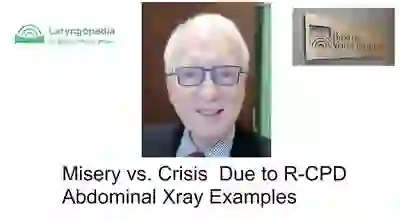
Shortness of Breath Caused by No-Burp
Persons who can’t burp and have the full-blown R-CPD syndrome often say that when the bloating and distention are particularly bad—and especially when they have a sense of chest pressure, they also have a feeling of shortness of breath.
They’ll say, for example, “I’m a [singer, or runner, or cyclist or _____], but my ability is so diminished by R-CPD. If I’m competing or performing I can’t eat or drink for 6 hours beforehand.” Some even say that they can’t complete a yawn when symptoms are particularly bad. The x-rays below explain how inability to burp can cause shortness of breath.
X-ray of trapped air (1 of 2)
X-ray of trapped air (1 of 2)
Side view (2 of 2)
Side view (2 of 2)
Achados Esofágicos
Aortic shelf (1 of 3)
Aortic shelf (1 of 3)
Bony spur emerges due to stretched esophagus (2 of 3)
Bony spur emerges due to stretched esophagus (2 of 3)
Stretched esophagus due to unburpable air (3 of 3)
Stretched esophagus due to unburpable air (3 of 3)
Alongamento Esofágico por Ar Não Burpável em DCF-R
Este jovem teve a síndrome clássica de DCF-R ao longo da vida. Seus achados esofágicos ao final de um estudo videoendoscópico da deglutição são clássicos. O esôfago é principalmente um tubo muscular colapsado em pessoas jovens, mas seu esôfago está amplamente aberto de forma contínua devido ao ar engolido que ele não consegue arrotar.
Typical view of an esophagus (1 of 4)
Typical view of an esophagus (1 of 4)
Lower esophagus (2 of 4)
Lower esophagus (2 of 4)
Stretched mid-esophagus (3 of 4)
Stretched mid-esophagus (3 of 4)
Esophagus stretches laterally (4 of 4)
Esophagus stretches laterally (4 of 4)
Achados esofágicos mais interessantes de DCF-R (incapacidade de arrotar)
Stretched Esophagus (1 of 4)
Stretched Esophagus (1 of 4)
Tracheal Wall (2 of 4)
Tracheal Wall (2 of 4)
Over-dilation (3 of 4)
Over-dilation (3 of 4)
Bronchus (4 of 4)
Bronchus (4 of 4)
DCF-R e dilatação esofágica
Posterior pharyngeal wall (1 of 3)
Posterior pharyngeal wall (1 of 3)
Is it R-CPD? (2 of 3)
Is it R-CPD? (2 of 3)
Stretched esophagus indicates R-CPD (3 of 3)
Stretched esophagus indicates R-CPD (3 of 3)
Como pode ser o esôfago “abaixo de um arroto”
Baseline (1 of 3)
Baseline (1 of 3)
Pre-burp (2 of 3)
Pre-burp (2 of 3)
Post-burp (3 of 3)
Post-burp (3 of 3)
Clique em um título acima para expandir.
![]()
Vídeos sobre DCF-R
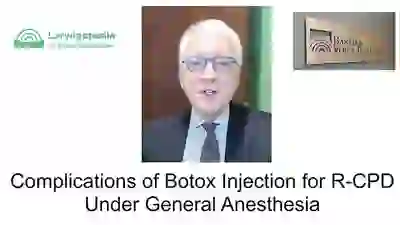
Complicações comparadas aos efeitos esperados no tratamento de DCF-R
Neste vídeo, o Dr. Bastian distingue a diferença entre os EFEITOS iniciais que são esperados e as COMPLICAÇÕES que os pacientes experimentaram em um número de casos de aproximadamente 870 pessoas. Esta discussão informal provavelmente tranquilizará as pessoas que consideram este tratamento para a grave miséria diária causada pelo DCF-R.
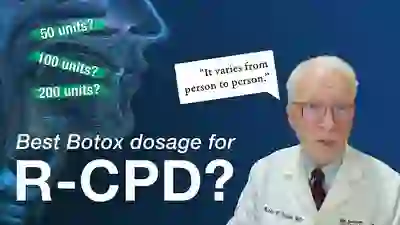
Qual é a melhor dose de Botox para DCF-R? 100 unidades? 50? 200?
Pacientes recém-diagnosticados com DCF-R costumam perguntar: “Qual é a melhor dose para a injeção inicial de Botox?” Dr. Bastian fornece uma resposta que inclui contexto e nuances da experiência de seu grupo com mais de 1.200 pacientes injetados até o momento.
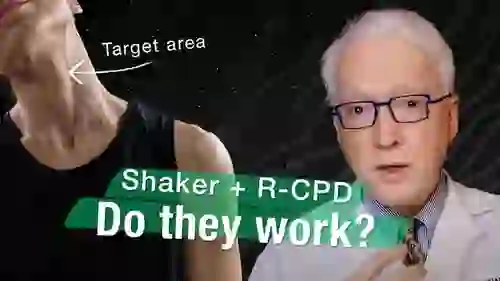
Os exercícios do Shaker funcionam no tratamento do DCF-R?
Neste vídeo, o Dr. Bastian explica seu pensamento sobre “Exercícios Shaker” como um meio de aprender a arrotar em pessoas com DCF-R (sem arroto). Um tópico recente no Reddit foi criado em resposta aos comentários do webinar de julho de 2022 sobre este assunto, e pareceu-lhe que não havia transmitido seu pensamento com clareza suficiente. Aqui está sua discussão mais detalhada e matizada…
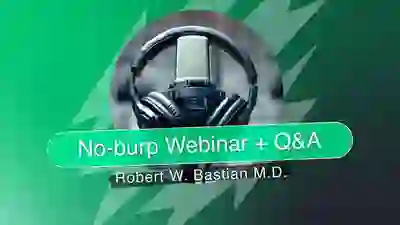
Webinar DCF-R
Um webinar ao vivo sobre DCF-R (sem arrotos) apresentado pelo Dr. Bastian em 26 de julho de 2022 às 18h. CST
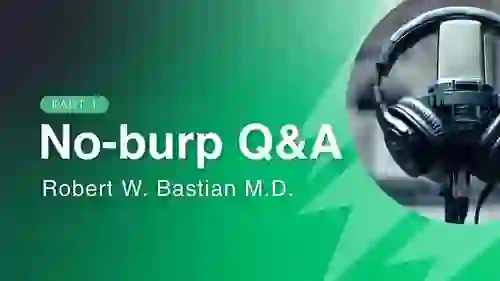
Perguntas e Respostas – Parte I
Dr. Bastian responde a uma lista de perguntas enviadas pelos participantes do Webinar DCF-R.
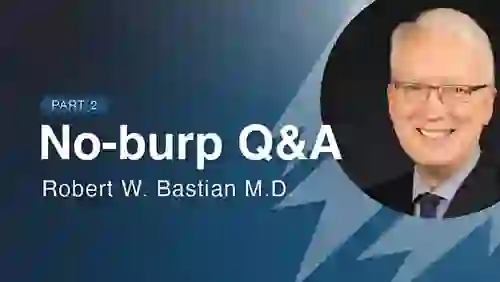
Perguntas e Respostas – Parte II
Na Parte 2 das perguntas e respostas do DCF-R, o Dr. Bastian responde a mais perguntas enviadas pelos participantes do webinar.

Painel DCF-R
Um painel de discussão de especialistas sobre DCF-R (também conhecido como “Síndrome de No-Burp”) apresentando perguntas e respostas de líderes da área.
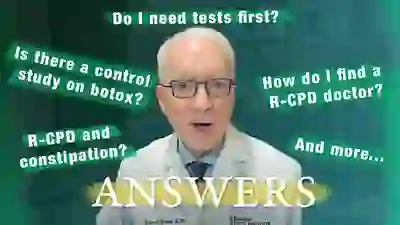
Suas perguntas comuns sobre DCF-R
Dr. Bastian responde a uma lista de perguntas enviadas pelo YouTube, Facebook e Instagram.

O que surpreende os que não arrotam nas pessoas que conseguem arrotar
Aqui estão algumas coisas que surpreendem as pessoas que não conseguem arrotar, sobre as pessoas que conseguem! (Isto é especialmente para aqueles com DCF-R, também conhecido como sem arroto).
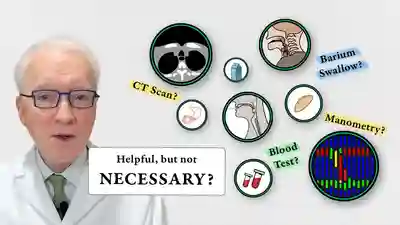
Avaliação DCF-R – Você precisa de testes para um diagnóstico?
O que é necessário para diagnosticar DCF-R? O que é suficiente? Precisamos gastar milhares de dólares em radiografias, manometria, exames gastrointestinais superiores, estudos de esvaziamento gástrico?

Como manter a capacidade de arrotar após o tratamento com Botox para DCF-R
Felizmente, o DCF-R pode ser tratado com sucesso com uma simples injeção ambulatorial de Botox em um músculo na parte superior do esôfago. Como o efeito do Botox no músculo serve como “rodas de apoio” para arrotar, cerca de 4 em cada 5 pessoas são “curadas” com um único tratamento. É por isso que buscamos um tratamento “único e pronto”.
Dr. Bastian descreve aqui como maximizar a probabilidade de que a capacidade de arrotar continue após o efeito do Botox.
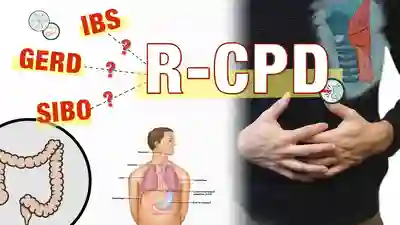
Qual é a relação entre DCF-R e DRGE? SIBO? SII?
Freqüentemente, e quase rotineiramente, pessoas com DCF-R facilmente diagnosticada podem inicialmente ser diagnosticadas como “doença do refluxo gastroesofágico” (DRGE) ou “síndrome do intestino irritável” (SII) ou “crescimento excessivo de bactérias no intestino delgado” (SIBO).
Os sintomas e achados de DRGE, SII e SIBO apontam para diagnósticos coexistentes e separados, ou esses sintomas fazem parte do diagnóstico mais amplo de DCF-R? Dr. Bastian discute essas questões neste vídeo.
![]()
Artigos DCF-R publicados pelo Dr. Bastian
Artigo inicial do Dr. Bastian sobre R-CPD
Inability to Belch and Associated Symptoms Due to Retrograde Cricopharyngeus Dysfunction: Diagnosis and Treatment
15 de Março de 2019
Partial Cricopharyngeal Myotomy for Treatment of Retrograde Cricopharyngeal Dysfunction
16 de Abril de 2020
The Long-term Efficacy of Botulinum Toxin Injection to Treat Retrograde Cricopharyngeus Dysfunction
29 de Junho de 2020
Efficacy and Safety of Electromyography-Guided Injection of Botulinum Toxin to Treat Retrograde Cricopharyngeus Dysfunction
2 de Fevereiro de 2021
![]()
Recursos adicionais do DCF-R
Conteúdo criado pela comunidade

No-Burp: It's not just you
(26,000+ no-burpers)

Retrograde Cricopharyngeus Dysfunction (R-CPD)
[2,200+ membros]

I can now burp
@Lilamycox

My weird medical history
@Brittcurls

My R-CPD journey
Julie Anne Gay
Veja mais entradas sobre DCF-R
Compartilhe este artigo
